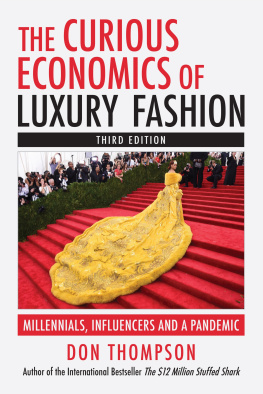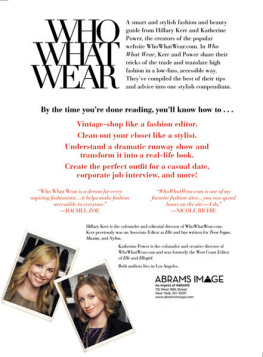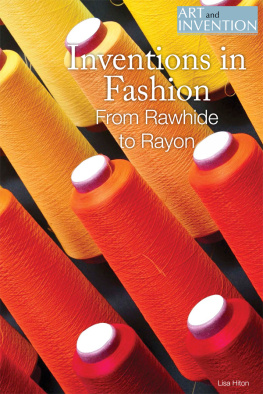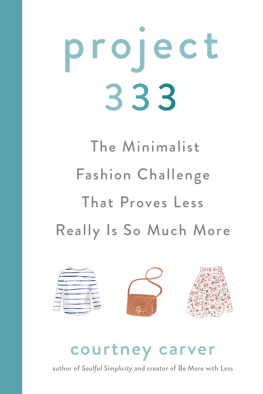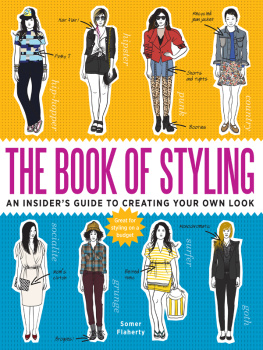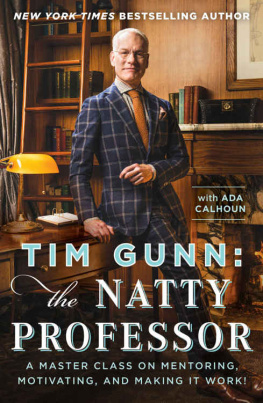THOU SHALT LOOK FABULOUS.

Thank you for purchasing this Gallery Books eBook.
Sign up for our newsletter and receive special offers, access to bonus content, and info on the latest new releases and other great eBooks from Gallery Books and Simon & Schuster.
C LICK H ERE T O S IGN U P
or visit us online to sign up at
eBookNews.SimonandSchuster.com
CONTENTS
Dedicated to fashion lovers past, present, and future

WHY A HISTORY OF WESTERN FASHION?
WE ALL HAVE an intuitive sense of what clothes mean. When you walk into a room or down the street, even without thinking about it, you immediately take note of clothing clues and judge the wearers accordingly. You can usually tell at a glance whether a person is rich, poor, or somewhere in the middle. Often, you can even guess what someone does for a livingthe messenger with his pants legs rolled up, the businessman in his suit.
And yet, its rare that people think about what their own clothes signify about their place in the world or their priorities. Clothes are self-expression. If you have a limited range of outfitssay, only capri pants and T-shirtsits as though you have a limited range of words in your vocabulary.
While many historians concern themselves with the dress of indigenous civilizations, the work of certain designers, or with very specific periods in fashion, I am most interested in the clothes we wear right here and now and how various looks came into vogue. My focus in this book is on Western fashion, with a particular emphasis on America. I will look, piece by piece, at the items most Americans have in their closets and ask, Do you know where this garment comes frombefore Old Navy?
This old thing?, you may think.
My answer is yes. Even that ratty band T-shirt has a fascinating history that goes back far before the Steel Wheels tour. While American fashion is often vilified as sloppy or as the poor relation of Parisian couture, I find it full of surprises, beauty, and history. And I love exploring the ways in which and the reasons why clothing changes over time.
Before writing this book, I considered myself to be something of a fashion expert. I was an educator for twenty-nine years, during which I loved learning as much as I loved teaching. And yet, while working on this book, my learning curve has so profoundly accelerated and my body of knowledge has so increased that I feel as though Ive gone through graduate school again! The research required was simultaneously daunting and exhilarating. Every day brought exclamations of surprise and wonder.

Marie Antoinette, wife of Louis the XVI, in a gown that typified the excess of the French court.
For example, I have always maintained that fashion is all about contextsocietal, cultural, historic, economic, and political. But even I was shocked by what a massive fashion shift occurred during the French Revolution. The sumptuous gowns during the reigns of Louis XIV, XV, and XVI became so dazzlingly vast and the wigs and headdresses so loftily high that architecture, interiors, and furniture all had to be reimagined. Then, in a moment, these dramatic silhouettes suddenly vanished, along with the royal court. In their place were dresses so basic that they resembled the simplest of nightgowns. These unbleached cotton garments had no infrastructure and no embellishments. It just goes to show: fashion and history are inextricably linked!
Why is it, you may ask, that the lions share of fashion history books examine fashion in the Western world? The answer is simple: for centuries clothing in the Western world has changed and evolved, while clothing in the East has remained unchanged. The Indian sari; the Chinese cheongsam, or qipao; the Korean hanbok; the Japanese kimono have all stayed the same for thousands of years. Their evolution is in the textile. The kimono, for example, is belted with an obi that must be 12 inches wide and 4.38 yards long. Hows that for prescriptive?
There are many examples of beautiful clothes in these parts of the world, and their histories are also fascinating, but there isnt the same level of evolution. For this same reason, Ill also put aside discussion of the European folk tradition. Regional peasant clothing is remarkable in its consistency. There is a Bronze Age clay figurine found in Romania of a woman whose costume bears an uncanny resemblance to a Bulgarian folk costume worn in the early twentieth century. Thats thirty-five hundred years in which the dress barely changed! But its a dead end for us if were talking about how fashion evolved to where we are today.
When you think, by contrast, about what happened to the toga, its pretty mind-blowing. The toga was just a piece of cloth that you draped around your body to preserve your modesty. The original toga was floor-length, and it was the apparel of the aristocracy. Wealthy Greeks and Romans wore it when gliding around rooms.
Outside, the ground was filthy, so the toga became shorter once Romans started to wear it beyond their marble-floored villas. Then, of course, people noticed that the bottom half of the garment became dirtier more quickly than the top, so the toga eventually evolved into separates... and today into both modern sportswear and the wrap dress.

In the 1920s, the drapiness of the ancient toga returned for the first time in centuries (although not usually as explicitly as in this 1920 photograph!).
When I take students to the Metropolitan Museum of Art, I love to lead them through the museum chronologically, because that way they come to understand the evolution of ideas. Even more exciting: they start to anticipate what may come next. Everything comes from somewhere, for some purpose. Thats why I love Renaissance painting. Every element has meaning, from a sparrow to a lily. And thats true of fashion, too.
In this book I will guide you age by age through fashions evolution from cavemens animal hides to the latest runway collections. Just as my students cheer when paintings with perspective emerge in the Mets collection, I hope this books readers will gasp as they see how Saxon underwear begat the cargo capri pant (and why thats the worst fashion trend in America today), or how the traditional Roman sandal, strapped up the leg to stay on in the heat of battle, evolved into the flip-flop worn by nearly every twenty-first-century college student.
High, narrow heels, by contrast, have always signified wealththeres no need to walk anywhere if youre of such a high class that you are carried around in a sedan chair orin modern timesa car. You can wear Jimmy Choos when youre just stepping out of the back of a limo and onto a red carpet and dont need to worry about getting your heel stuck in sidewalk gratings or cracks. In the 1990s, we had chunky heels, partly because it was not as fashionable to be rich during the grunge era.
Things happen for a reason and only have staying power for a reason. Some fashion historians argue that every change in fashion reflects a focus on a new erogenous zone and that changes in necklines and hemlines stem from a desire to stave off sexual boredom.
Next page

